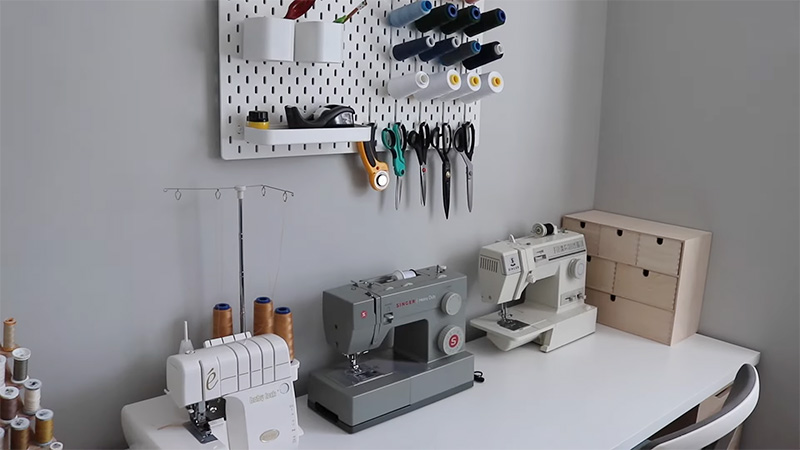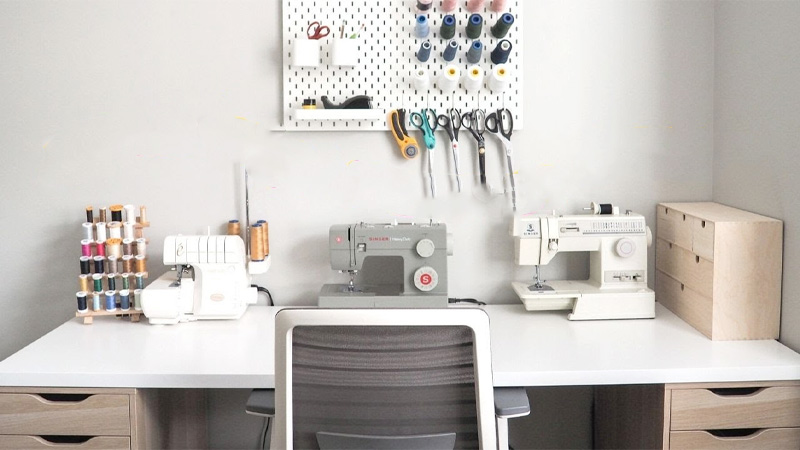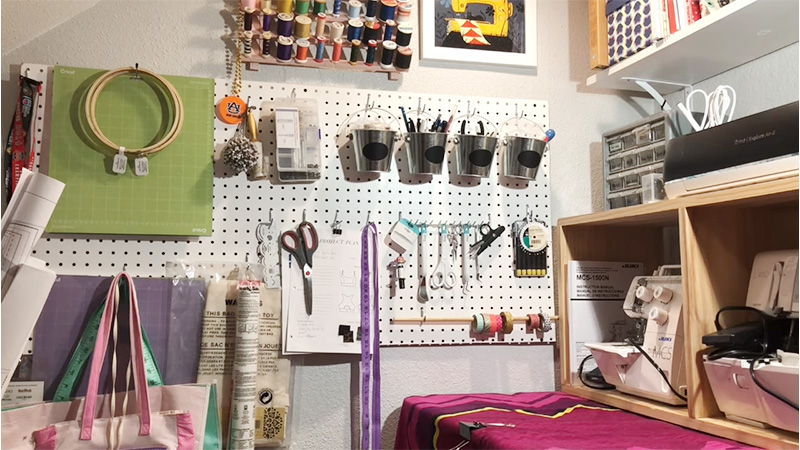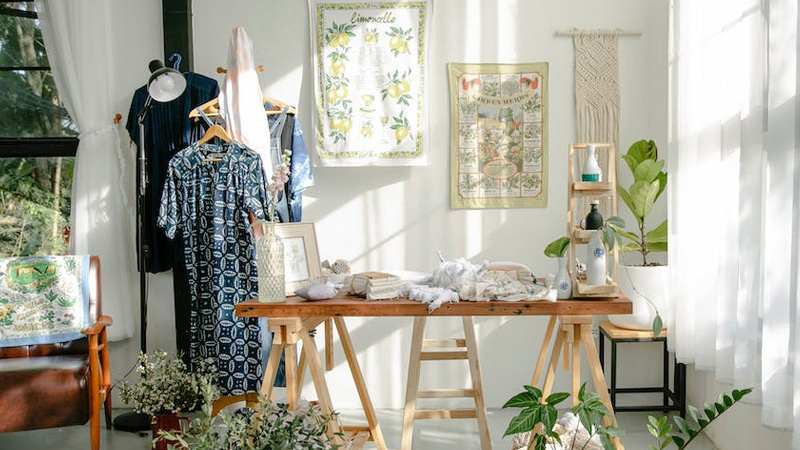Spacing in sewing is a fundamental concept that holds the threads, seams, and stitches together, defining the very essence of a well-crafted project.
This critical aspect of sewing involves the strategic placement of stitches, seams, and decorative elements to achieve both functional and aesthetic goals.
Whether you’re a novice seamstress or a seasoned craftsperson, mastering spacing is essential to ensure the durability, appearance, and fit of your creations.
In this exploration of sewing spacing, we will delve into its significance, the factors influencing spacing choices, and practical guidelines for achieving the perfect stitch, seam, or decorative embellishment in your sewing endeavors.

What Is Spacing for Sewing?
Spacing in sewing refers to the distance between stitches, whether it’s the gap between individual stitches or the distance between rows of stitches.
Proper spacing is crucial in sewing as it affects the overall appearance, strength, and functionality of the finished project.
Understanding and controlling spacing is a fundamental skill for any sewist, whether you’re working on clothing, quilts, home decor, or any other sewing project.
Here are some key aspects of spacing in sewing:
Stitch Length
Stitch length refers to the distance between each individual stitch along a seam. You can typically adjust the stitch length on your sewing machine to create shorter or longer stitches.
The appropriate stitch length depends on the type of fabric you’re working with and the purpose of the seam.
Shorter stitches are usually used for delicate fabrics or where added strength is needed, while longer stitches can be used for gathering or basting.
Seam Allowance
Seam allowance is the amount of fabric between the seam line (the line where you sew) and the edge of the fabric.
It’s important to maintain a consistent seam allowance throughout your project, as it affects the fit and construction.
Seam allowance spacing can vary, but common measurements are ¼ inch (6 mm) for quilting, ⅝ inch (1.6 cm) for garment construction, and so on.
Topstitching
Topstitching is a decorative or functional row of stitches on the outside of a garment or project. The spacing between topstitches can be uniform or varied, depending on the desired look.
When topstitching, it’s essential to maintain even spacing to achieve a professional finish.
Quilting
Quilting involves stitching multiple layers of fabric together with decorative or functional stitching.
The spacing between quilting lines can vary widely, from dense quilting lines close together to create a quilted pattern, to wider spacing for a more minimalistic look.
Buttonholes
When sewing buttonholes, proper spacing between the stitches is crucial to ensure that the button fits through easily and securely.
Modern sewing machines often have built-in buttonhole settings that automate the process, but spacing and length can still be adjusted.
Embroidery
In embroidery, spacing is vital for creating intricate designs. Embroidery machines can be programmed to control the spacing between stitches, allowing for precise and detailed work.
Serger Stitch Spacing
Sergers, also known as overlock machines, are specialized sewing machines designed to finish raw fabric edges, create strong seams, and add professional-looking edge finishes.
Achieving the correct stitch spacing with a serger is crucial for producing clean and neat edges on your seams.
Why Is Spacing Important for Sewing?

Spacing is essential in sewing for several reasons, and it plays a critical role in determining the quality and functionality of your sewing projects.
Here are some key reasons why spacing is important in sewing:
Aesthetics
Proper spacing between stitches and seams contributes to the overall appearance of your sewing projects.
Even, consistent spacing can make your work look polished and professional. On the other hand, uneven spacing or irregular stitch lengths can detract from the visual appeal of your project.
Strength and Durability
The spacing of stitches affects the strength and durability of your seams. When stitches are too far apart, the fabric between them may not be adequately secured, leading to weaker seams that are prone to unraveling or tearing.
Conversely, stitches that are too close together can create unnecessary stress on the fabric, potentially causing it to weaken over time.
Fit and Functionality
In garment sewing, spacing is crucial for achieving the correct fit. Seam allowances, darts, and pleats all rely on precise spacing to ensure that the garment fits properly and is comfortable to wear.
Incorrect spacing in these areas can lead to garments that are ill-fitting or uncomfortable.
Decorative Stitching
In decorative stitching, spacing is a creative tool. The distance between decorative stitches can influence the design’s overall look and texture.
Precise spacing is necessary for achieving the desired visual effects and maintaining the structural integrity of the quilt or project.
Ease of Sewing
Proper spacing can make the sewing process more manageable. It allows for smoother fabric handling, reduces the chances of fabric bunching or puckering, and generally makes sewing more enjoyable and less frustrating.
Professional Finish
Whether you’re sewing for personal use or for customers, achieving a professional finish is essential. Proper spacing is a hallmark of quality craftsmanship.
It sets your work apart and can lead to greater satisfaction with the final product.
Pattern Accuracy
When working from sewing patterns, spacing guidelines are typically provided. Adhering to these guidelines ensures that your pieces align correctly and that the project comes together as intended.
Deviating from the specified spacing can lead to pattern pieces not matching up as they should.
How Do You Choose the Right Spacing for Sewing?

Spacing is essential in sewing for several reasons, and it plays a critical role in determining the quality and functionality of your sewing projects.
Here are some key reasons why spacing is important in sewing:
Aesthetics
Proper spacing between stitches and seams contributes to the overall appearance of your sewing projects.
Even, consistent spacing can make your work look polished and professional. On the other hand, uneven spacing or irregular stitch lengths can detract from the visual appeal of your project.
Strength and Durability
The spacing of stitches affects the strength and durability of your seams. When stitches are too far apart, the fabric between them may not be adequately secured, leading to weaker seams that are prone to unraveling or tearing.
Conversely, stitches that are too close together can create unnecessary stress on the fabric, potentially causing it to weaken over time.
Fit and Functionality
In garment sewing, spacing is crucial for achieving the correct fit. Seam allowances, darts, and pleats all rely on precise spacing to ensure that the garment fits properly and is comfortable to wear.
Incorrect spacing in these areas can lead to garments that are ill-fitting or uncomfortable.
Buttonholes and Fastenings
Properly spaced buttonholes are essential for functional and secure fastenings on clothing and accessories.
If buttonholes are too close together, they can become crowded and may not function correctly. If they are too far apart, buttons may not align properly, causing gaps in the closure.
Quilting and Decorative Stitching
In quilting and decorative stitching, spacing is a creative tool. The distance between quilting lines or decorative stitches can influence the design’s overall look and texture.
Precise spacing is necessary for achieving the desired visual effects and maintaining the structural integrity of the quilt or project.
Ease of Sewing
Proper spacing can make the sewing process more manageable. It allows for smoother fabric handling, reduces the chances of fabric bunching or puckering, and generally makes sewing more enjoyable and less frustrating.
What Are Some Common Spacing for Sewing?

Here are some common spacing considerations for sewing, along with their typical applications:
Basting or Temporary Stitching (1.5 to 2 mm)
Used for temporary stitching to hold fabric layers together. Easily removable and doesn’t leave permanent holes. Helpful for fitting adjustments and pattern placement.
Regular Straight Stitching (2 to 2.5 mm)
The standard stitch length for most sewing tasks. Suitable for constructing seams in garments and general sewing projects. Provides a balance between strength and flexibility.
Topstitching or Edge Stitching (3 to 4 mm)
Used for sewing visible, decorative stitches on the top layer of fabric. Enhances the appearance and structure of seams and edges. Commonly used for hems, collars, cuffs, and decorative details.
Decorative Stitching (4 to 5 mm)
Creates intricate and decorative patterns on fabric. Often used for embellishing garments, quilts, and home decor items. Provides a unique and artistic touch to sewing projects.
FAQs
What is spacing in sewing?
Spacing in sewing refers to the distance between stitches, seams, or decorative elements in a sewing project. It plays a crucial role in determining the project’s appearance, strength, fit, and functionality.
Why is spacing important in sewing?
Proper spacing ensures that stitches and seams are secure, prevents fraying, and enhances the overall quality and aesthetics of the project. It also influences the fit of garments and the durability of seams.
How do I choose the right spacing for my sewing project?
The appropriate spacing depends on factors such as fabric type, project purpose, and personal preferences.
What are some common spacing considerations in sewing?
Common spacing considerations include stitch length, seam allowance, buttonhole spacing, quilting or decorative stitch spacing, and spacing for serger stitches.
Can spacing be adjusted on a sewing machine or serger?
Yes, most sewing machines and sergers allow you to adjust spacing parameters like stitch length, seam width, and buttonhole spacing.
To Wrap Up
In the world of sewing, where precision and artistry intersect, spacing emerges as a silent yet powerful conductor of craftsmanship.
The careful consideration of stitch length, seam allowances, buttonhole intervals, and decorative embellishments shapes the very essence of a sewing project.
By understanding the importance of spacing, we unlock the potential to create not just functional but beautifully finished garments, quilts, and crafts.
Through practice and attention to detail, we master the art of balancing strength and aesthetics.
In conclusion, spacing in sewing is the invisible hand that guides the needle, enabling us to transform fabric into both utilitarian and exquisite works of art.
Leave a Reply